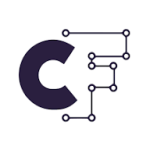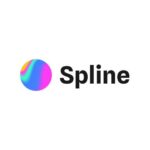Bolt AI creates UI prototypes from text descriptions, which solves the need for fast visual mockups without design software.
Bolt AI handles the task of turning ideas into visual UI prototypes. Users type descriptions, and the AI builds layouts, components, and flows. Designers use it for concept visuals, product managers for stakeholder demos, and developers for front-end starts. The focus stays on UI-heavy prototypes like landing pages or dashboards, with simple navigation links.
Key Features of Bolt AI
- Prompt-Based UI Generation: Users input text descriptions of screens or flows, and the AI assembles wireframes, components, and styles into interactive prototypes for rapid UI design in web development.
- Live Prototype Preview: Generated UIs render in real-time with clickable elements, which lets users test navigation and user experience without build steps in prototype testing cycles.
- Customization Panel: Edit colors, fonts, and layouts directly on the canvas, with drag-drop for repositioning to refine designs in iterative UI prototyping workflows.
- Collaboration Links: Share prototype URLs with edit or view access, which supports team reviews and feedback loops in remote design collaboration.
How to Use Bolt AI
- Visit the site and sign up with email to enter the workspace.
- Select “New Prototype” and describe the UI in text, like “mobile app login screen with social buttons.”
- View the auto-generated layout and click elements to interact.
- Adjust details in the side panel for styles or add screens via new prompts.
- Share the preview link or export files when ready.
- Save versions to the dashboard for later edits or regenerations.
Key Use Cases for Bolt AI
- Design Concept Mockups: Designers describe screen ideas to get visual drafts fast, which aids brainstorming sessions and client presentations in UI/UX design phases.
- Product Roadmap Demos: Managers build flow prototypes from specs to show features, which clarifies visions and gathers input from stakeholders in agile product development.
- Front-End Scaffolding: Developers generate base UIs from requirements, which provides starting code and reduces boilerplate in web app scaffolding tasks.
- User Testing Prep: Teams create clickable prototypes to simulate experiences, which identifies issues early in user research and validation cycles.
- Freelance Pitch Tools: Freelancers turn brief notes into polished UIs, which impress clients and shortens proposal cycles in creative service work.
Pros and Cons
Pros:
- Builds UIs from plain text prompts.
- Offers instant interactive previews.
- Enables quick team sharing.
- Includes basic templates for starts.
Cons:
- Handles limited screen complexity.
- Prompt results vary with detail.
FAQs
Is Bolt AI Free to Use?
Yes, Bolt AI is free to use.
How does Bolt AI create prototypes?
It reads text prompts to map elements and layouts, then assembles them into browsable UIs with links between screens for flow simulation.
Can I edit prototypes in Bolt AI?
Yes, the built-in editor changes visuals and structures, with auto-updates to previews for seamless refinements.
What UI types suit Bolt AI best?
Web and mobile screens like forms or dashboards fit well, though intricate custom components may need extra adjustments.
Are prototypes secure in Bolt AI?
Links use temporary access, and exports give control for private hosting to protect ideas.

































